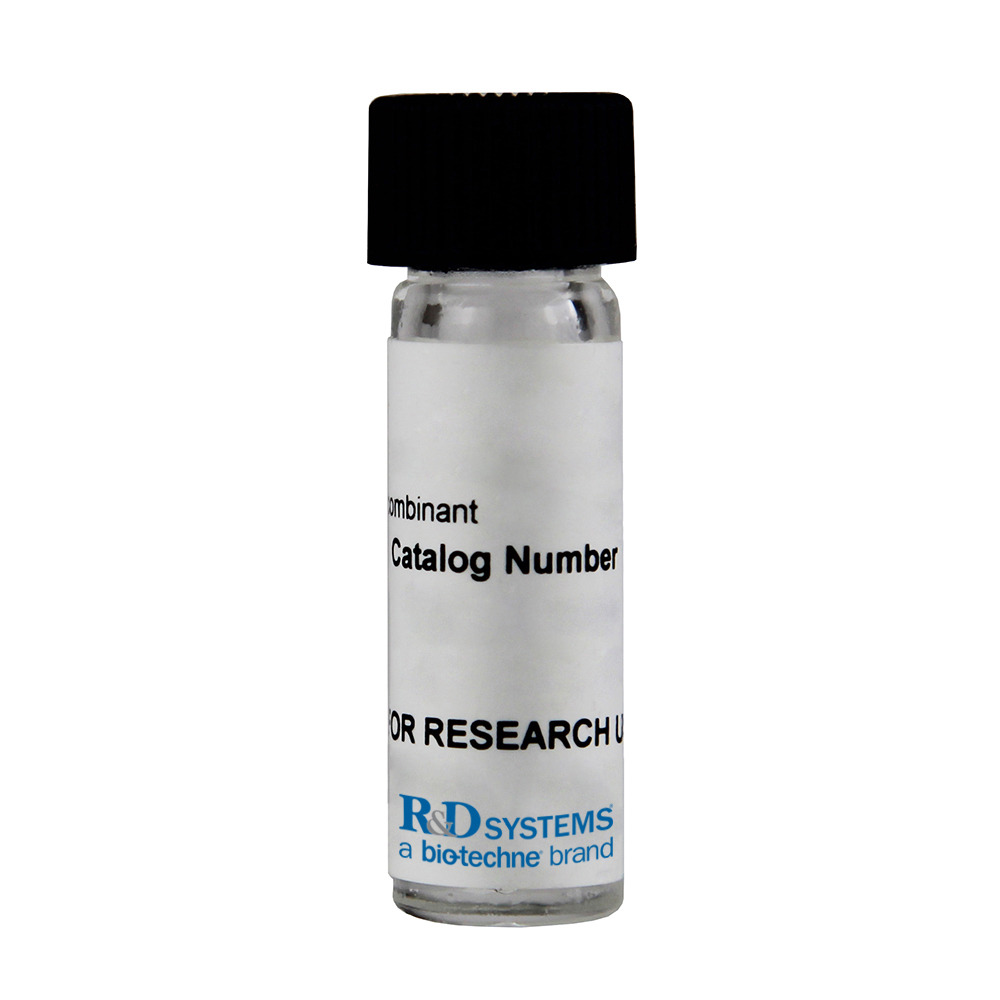 全部商品分类
全部商品分类

 下载产品说明书
下载产品说明书 下载SDS
下载SDS 用小程序,查商品更便捷
用小程序,查商品更便捷


 收藏
收藏
 对比
对比 咨询
咨询Carrier Free
CF stands for Carrier Free (CF). We typically add Bovine Serum Albumin (BSA) as a carrier protein to our recombinant proteins. Adding a carrier protein enhances protein stability, increases shelf-life, and allows the recombinant protein to be stored at a more dilute concentration. The carrier free version does not contain BSA.
In general, we advise purchasing the recombinant protein with BSA for use in cell or tissue culture, or as an ELISA standard. In contrast, the carrier free protein is recommended for applications, in which the presence of BSA could interfere.
8455-PT
| Formulation | Supplied as a 0.2 μm filtered solution in HEPES, NaCl, DTT and Glycerol. |
| Shipping | The product is shipped with polar packs. Upon receipt, store it immediately at the temperature recommended below. |
| Stability & Storage: | Use a manual defrost freezer and avoid repeated freeze-thaw cycles.
|
Recombinant Human PRL-3/PTP4A3 Protein, CF Summary
Product Specifications
Ala2-Met173, with N-terminal Met and 7-His tag
Analysis

Background: PRL-3/PTP4A3
Phosphatase of regenerating liver 3 (PRL-3), also known as protein-tyrosine phosphatase 4A3 (PTP4A3), is a member of the PRL subgroup of PTPases (1). It is preferentially expressed in skeletal muscle and the heart (2). Human PRL-3 shares 97% amino acid sequence identity with mouse and rat PRL-3. Structurally, PRL-3 consists of a five-stranded beta -sheet and six alpha -helices (3, 4). It has been shown to associate with membranes in a farnesylation-dependent manner (5). Both PRL-3 over-expression and attenuation of PRL-3 expression results in cell cycle arrest, suggesting that basal expression levels of this enzyme are important for normal cell cycle progression (6). PRL-3 has been shown to activate NF-kappa B signaling and may itself be regulated by FKBP38 (7, 8). PRL-3 also promotes epithelial to mesenchymal transition, tumor angiogenesis, cell migration, invasion, and metastasis, and it is over-expressed in multiple human cancers (9-18). Src-mediated phosphorylation of PRL-3 may be required for PRL-3-dependent cell migration and invasion (19).
- Bessette, D.C. et al. (2008) Cancer Metastasis Rev. 27:231.
- Zeng, Q. et al. (1998) Biochem. Biophys. Res. Commun. 244:421.
- Kozlov, G. et al. (2004) J. Biol. Chem. 279:11882.
- Kim, K.A. et al. (2004) FEBS Lett. 565:181.
- Zeng, Q. et al. (2000) J. Biol. Chem. 275:21444.
- Basak, S. et al. (2008) Mol. Cell 30:303.
- Lian, S. et al. (2013) Biochem. Biophys. Res. Commun. 430:196.
- Choi, M.S. et al. (2011) Biochem. Biophys. Res. Commun. 406:305.
- Wang, H. et al. (2007) Cancer Res. 67:2922.
- Liu, Y. et al. (2009) Cancer Biol. Ther. 8:1352.
- Pryczynicz, A. et al. (2014) Tumour Biol. 35:6587.
- Guo, K. et al. (2006) Cancer Res. 66:9625.
- Ming, J. et al. (2014) Pathobiology 81:1.
- Zeng, Q. et al. (2003) Cancer Res. 63:2716.
- Kato, H. et al. (2004) Clin. Cancer Res. 10:7318.
- Al-Aidaroos, A.Q. and Q. Zeng (2010) J. Cell. Biochem. 111:1087.
- Jiang, Y. et al. (2011) Cancer Res. 71:234.
- Krndija, D. et al. (2012) J. Cell Sci. 125:3883.
- Fiordalisi, J.J. et al. (2013) PLoS One 8:e64309.





